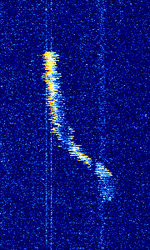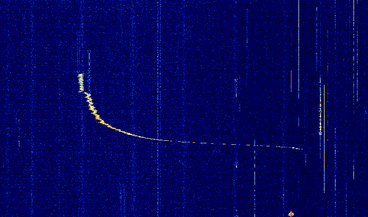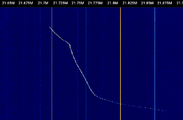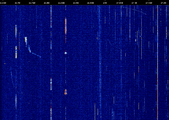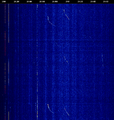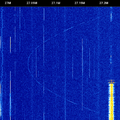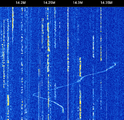RF heating and welding interference
This type of signals is believed to originate from radio frequency heating and welding applications. RFRadio Frequency heating is used in industry for drying wood products, welding plastics and for other purposes. Such heating equipment may radiate RFRadio Frequency interference which can be picked up by radio receivers. During good propagation conditions, such interference may be hearable over long distances.
On a waterfall spectrum display, RFRadio Frequency heating interference typically appears as wobbly peaks that drift downwards in frequency and last for some seconds. These are also called hooks, fish hooks and sweepers. The peaks may drift over several hundred kilohertz but sometimes stable peaks are seen as well.
Samples[edit]
Frequencies[edit]
RFRadio Frequency heating equipment should operate on the designated Industrial, Scientific and Medical (ISM) bands. However, due to poor frequency stability of such equipment, outright negligence or other reasons, they are commonly found outside the ISM bands as well.
The most common frequency range where this kind of interference can be found is approximately 24 MHzMegaHertz (MHz) 10^6 Hz to 30 MHzMegaHertz (MHz) 10^6 Hz which is close to the 27.12 MHzMegaHertz (MHz) 10^6 Hz ISM band. It can also be found above 30 MHzMegaHertz (MHz) 10^6 Hz in the low VHFVery High Frequency (30-300 MHz) band. Another quite common range is around the 13.56 MHzMegaHertz (MHz) 10^6 Hz ISM band.
